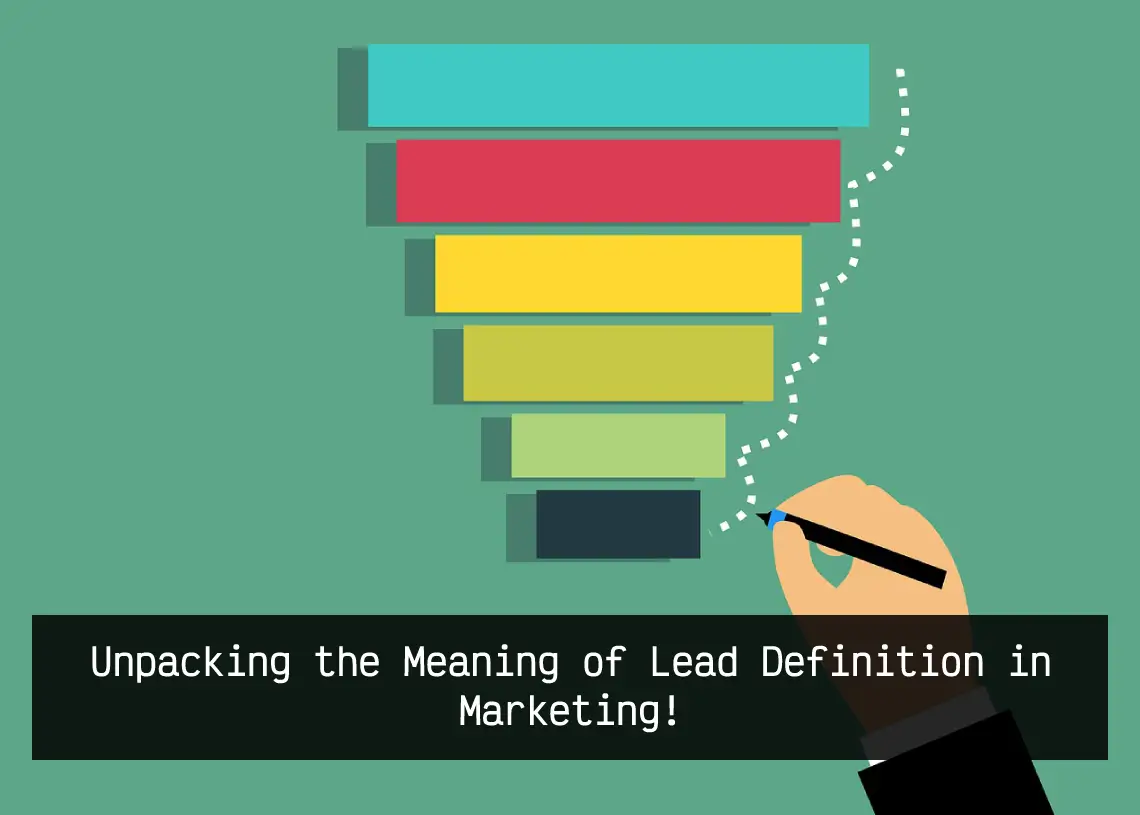Leads can be incredibly valuable for marketing teams, providing them with the insight they need to make more informed decisions. But what exactly is a lead? How can they be used to benefit your marketing strategy? In this blog, we’ll unpack the meaning of lead definition in marketing and discuss the types of leads, benefits of leads in marketing, how to identify and qualify leads, and best practices for lead in marketing.
Introduction to Lead Definition in Marketing
Lead definition in marketing is the process of identifying potential customers and assessing their interest in a product or service. It is the first step in the sales process, and it can be used to nurture relationships and build trust. Lead generation is the process of attracting leads and converting them into customers. The goal of lead definition in marketing is to target potential customers who are likely to be interested in what you have to offer.
Leads come in many forms, and they can be found in both online and offline sources. Some of the most common sources of leads include social media, search engine optimization (SEO), content marketing, email campaigns, and tradeshows. The key to successful lead generation is understanding your target audience and creating content that resonates with them.
Build an online presence with trusted marketing software!
Types of Leads in Marketing
Leads can be divided into two categories: cold leads and warm leads. Cold leads are people who have never interacted with your company before, while warm leads are people who have already interacted with your company in some way. Cold leads may require more effort to convert, as they are unfamiliar with your product or service. Warm leads, on the other hand, are more likely to convert, as they already have a positive impression of your company.
Leads can also be divided into three categories: prospecting leads, marketing leads, and sales leads. Prospecting leads are leads that have been identified through marketing efforts but have not yet been qualified. Marketing leads are leads that have been qualified by marketing and are ready to be passed on to sales. Sales leads are leads that have been qualified by sales and are likely to result in a sale.
Earn a certificate in your dream career for an affordable price at IAP Career College today!
Benefits of Lead in Marketing
Leads are essential for any successful marketing strategy, as they provide businesses with valuable insight into potential customers. Leads can help businesses target the right audience, identify customer needs, and develop more effective marketing campaigns. They can also help businesses improve customer relationships, build customer loyalty, and increase sales.
Leads can also provide businesses with valuable data, such as customer demographics, buying habits, and preferences. By tracking and analyzing this data, businesses can better understand their target audience, tailor their marketing messages, and create more effective campaigns.
Leads can also help businesses increase their ROI. By targeting leads that are more likely to convert, businesses can maximize their marketing budgets and maximize their return on investment.
Identifying and Qualifying Leads
Leads can be identified and qualified in various ways. Some of the most popular methods include social media, SEO, content marketing, email campaigns, and tradeshows.
Social media is one of the best ways to identify and qualify leads. By leveraging social media platforms such as Twitter, Facebook, and Instagram, businesses can target potential customers, interact with them, and build relationships. Additionally, businesses can use social media to track customer engagement and create targeted campaigns.
Search engine optimization (SEO) is another effective way to identify and qualify leads. By optimizing webpages and content for search engines, businesses can increase their visibility and attract more qualified leads. Additionally, businesses can use SEO to target specific keywords and phrases, allowing them to better target their desired audience.
Content marketing is also an effective way to identify and qualify leads. By creating content that is valuable and engaging, businesses can attract more qualified leads and build relationships with them. Additionally, businesses can use content to educate potential customers and increase their trust in the company.
Email campaigns are a great way to identify and qualify leads. By creating targeted email campaigns, businesses can target specific leads and nurture relationships with them. Additionally, businesses can use email campaigns to track customer engagement and create targeted campaigns.
Tradeshows are another great way to identify and qualify leads. By attending tradeshows, businesses can meet potential customers in person and build relationships with them. Additionally, businesses can use tradeshows to generate leads, collect customer data, and increase brand awareness.
Social Media Marketing Agency: Digital Marketing + Business
Best Practices for Lead in Marketing
Lead definition in marketing is an essential step in any successful marketing strategy. To ensure success, it’s important to have a clear understanding of your target audience and create content that resonates with them. Additionally, it’s important to track customer engagement and create targeted campaigns. Here are some best practices for lead in marketing:
- Identify the right sources: Identify the sources that are most likely to generate qualified leads. This may include social media, SEO, content marketing, email campaigns, and tradeshows.
- Nurture relationships: Nurture relationships with leads by providing them with valuable content and engaging with them on social media.
- Track customer engagement: Track customer engagement by tracking customer data and analyzing customer behavior. This can help you create more effective campaigns.
- Create targeted campaigns: Create targeted campaigns that are tailored to specific audiences. By targeting specific leads, businesses can maximize their ROI.
- Test and measure: Test and measure the effectiveness of campaigns, and use the results to refine your strategy.
Email Marketing Masterclass: Start & Growth your Email List
Conclusion
Lead definition in marketing is an essential step in any successful marketing strategy. By understanding lead definition in marketing, businesses can better identify and qualify leads, nurture relationships, and maximize their return on investment. Additionally, businesses can use lead definition in marketing to track customer engagement, create targeted campaigns, and increase sales. By following the best practices discussed in this blog, businesses can ensure that their lead definition in marketing is successful.




